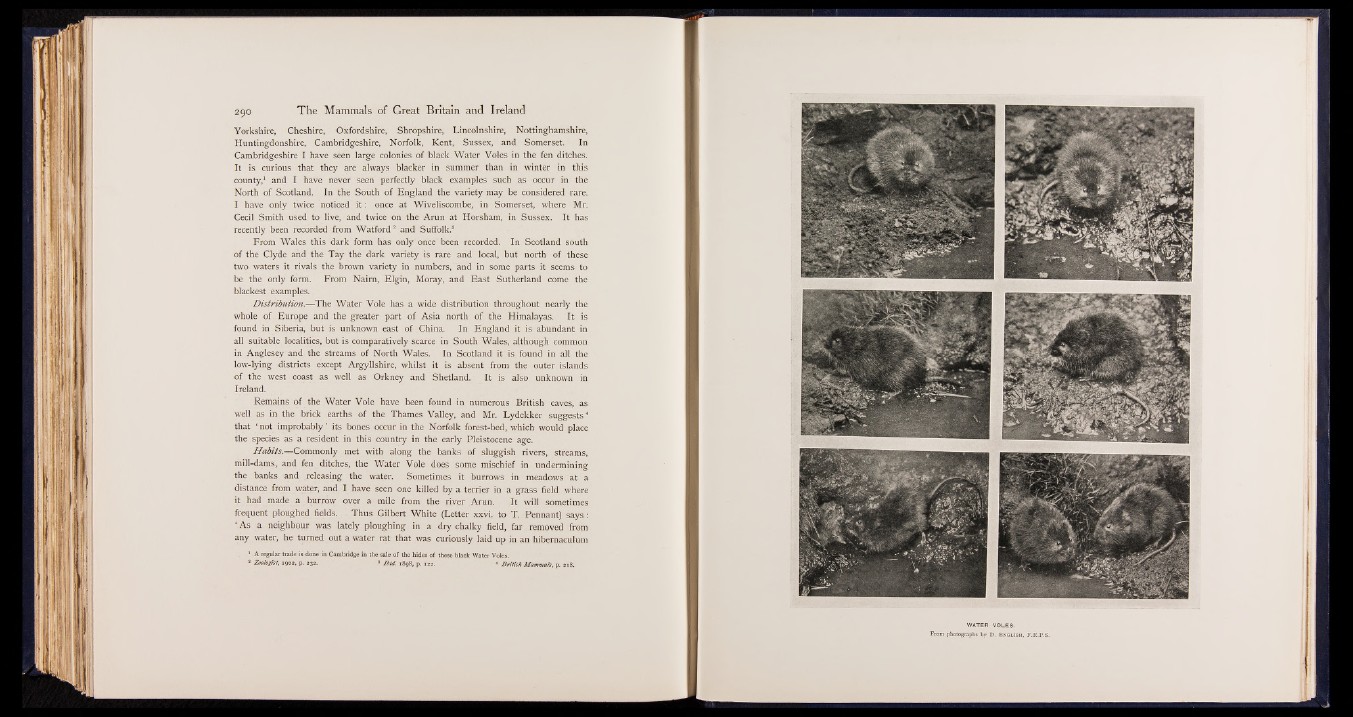
Yorkshire, Cheshire, Oxfordshire, Shropshire, Lincolnshire, Nottinghamshire,
Huntingdonshire, Cambridgeshire, Norfolk, Kent, Sussex, and Somerset. In
Cambridgeshire I have seen large colonies of black Water Voles in the fen ditches.
It is curious that they are always blacker in summer than in winter in this
county,1 and I have never seen perfectly black examples such as occur in the
North of Scotland. In the South of England the variety may be considered rare.
I have only twice noticed i t : once at Wiveliscombe, in Somerset, where Mr.
Cecil Smith used to live, and twice on the Arun at Horsham, in Sussex. It has
recently been recorded from Watford2 and Suffolk.3
From Wales this dark form has only once been recorded. In Scotland south
of the Clyde and the Tay the dark variety is rare and local, but north of these
two waters it rivals the brown variety in numbers, and in some parts it seems to
be the only form. From Nairn, Elgin, Moray, and East Sutherland come the
blackest examples.
D istribution.—The Water Vole has a wide distribution throughout nearly the
whole of Europe and the greater part of Asia north of the Himalayas. It is
found in Siberia, but is unknown east of China. In England it is abundant in
all suitable localities, but is comparatively scarce in South Wales, although common
in Anglesey and the streams of North Wales. In Scotland it is found in all the
low-lying districts except Argyllshire, whilst it is absent from the outer islands
of the west coast as well as Orkney and Shetland. It is also unknown in
Ireland.
Remains of the Water Vole have been found in numerous British caves, as
well as in the brick earths of the Thames Valley, and Mr. Lydekker suggests4
that ‘ not improbably ’ its bones occur in the Norfolk forest-bed, which would place
the species as a resident in this country in the early Pleistocene age.
H abits.—Commonly met with along the banks of sluggish rivers, streams,
mill-dams, and fen ditches, the Water Vole does some mischief in undermining
the banks and .releasing the water. Sometimes it burrows in meadows at a
distance from water, and I have seen one killed by a terrier in a grass field where
it had made a burrow over a mile from the river Arun. It will sometimes
frequent ploughed fields. Thus Gilbert White (Letter xxvi. to T. Pennant) says :
‘ As a neighbour was lately ploughing in a dry chalky field, far removed from
any water, he turned out a water rat that was curiously laid up in an hibernaculum
1 A regular trade is done in Cambridge in the sale of the hides of these black Water Voles.
2 Zoologist, 1902, p. 232. 3 Ibid. 1898, p. 122. * British Mammals, p. 2x8.